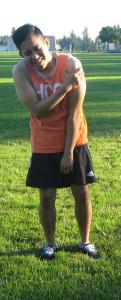It is considered uncommon to endure a broken shoulder blade without sustaining severe trauma. Nevertheless, the clavicle as well as the proximal humerus is component of the shoulder and these are usually fractured. The doctor will restrain the shoulder by applying an arm sling until the bones completely heal. If the individual sustained a broken shoulder, it is vital to follow the treatment recommendations given by the doctor.
http://youtu.be/ASjBKwsFxfk
Identifying a broken shoulder
It is important to note that cases of broken shoulders have affected some individuals in some point in their lives. The indications of a broken shoulder typically include intense pain when the arm is moved, skin abrasions as well as swelling around the rear side of the shoulder. Various parts of the scapula can also become fractured. In most cases, the doctor will request for an X-ray to check the extent of the damage as well as decide on the appropriate treatment. In most cases of shoulder fractures, the scapular body is involved.

Treatment for a broken shoulder
In some circumstances, the broken shoulder would require surgical intervention. Nevertheless, in most cases, a broken shoulder can heal on its own once properly immobilized. A simple arm sling often works in order to keep the shoulder in place. The doctor will recommend physical therapy that includes range-of-motion exercises within 2-4 weeks. Take note that complete range of motion will take up to a year to completely return to normal. Additionally, passive stretching and other exercises for the shoulder can help restore the full functionality of the shoulder.
Arm sling
In many cases, the healthcare facility will provide an arm sling that will be applied on the shoulder. The elbow will be bent at a 90-degree angle across the waist. You have to fasten the strap of the sling at the rear of the neck and gently position the arm in the sling. The elbow must rest comfortably inside the closed end of the sling. You have to adjust the strap as needed so that the individual will no longer experience unwanted pain as well as ensure that the arm stays at a 90-degree angle.
Other alternatives
If an arm sling is not readily available, you can easily create one. All you have to do is to look for a piece of cloth that is up to 5 feet wide and 3 feet in length. Fold or cut the cloth into a triangular shape. Position the elbow at the top of the triangle to ensure that the wrist is along the bottom perimeter of the triangle. Secure the two edges behind the head of the individual. Make sure to adjust based on the height so that the elbow stays at the right angle. If you want to learn more about arm slings, click here.
